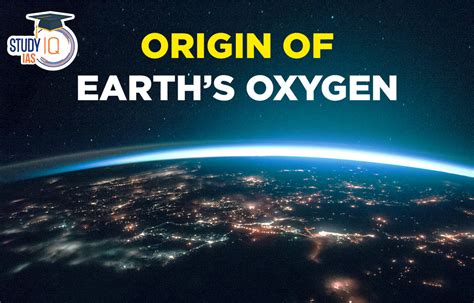
Earth’s inhabitants, including humans, will eventually face a mass extinction event triggered by a catastrophic drop in atmospheric oxygen levels, potentially within the next billion years, according to new research. Scientists predict that the Earth is destined to return to conditions resembling those before the Great Oxidation Event, a period over two billion years ago when the planet was virtually devoid of free oxygen.
The findings, published in Nature Geoscience, suggest that while human activity is currently impacting oxygen levels, the ultimate demise of oxygenic life is inevitable and driven by long-term astrophysical processes.
Earth’s Atmospheric Oxygen Doomed to Plummet, Threatening All Complex Life
Life on Earth as we know it, sustained by breathable air, has a limited lifespan. A new study indicates that a drastic decline in atmospheric oxygen is inevitable, spelling doom for all complex life forms, including humans, within roughly a billion years.
The research, led by Kazumi Ozaki of Toho University in Japan and Christopher Reinhard of the Georgia Institute of Technology, employed advanced computer models to simulate Earth’s future atmospheric conditions, factoring in various astrophysical, geological, and biological processes. Their simulations paint a bleak picture, projecting a return to pre-Great Oxidation Event (GOE) conditions, characterized by extremely low oxygen levels.
“We find that the Earth’s oxygenated atmosphere will not be a permanent feature,” Ozaki stated.
The GOE, which occurred approximately 2.4 billion years ago, marked a pivotal moment in Earth’s history. Cyanobacteria, through photosynthesis, began releasing oxygen into the atmosphere, leading to a dramatic increase in oxygen levels. This event paved the way for the evolution of complex, multicellular life that relies on oxygen for respiration.
However, the current study suggests that this oxygen-rich era is merely a temporary phase in Earth’s long-term evolution. The primary driver of the eventual oxygen decline is the increasing luminosity of the sun. As the sun ages, it gradually becomes brighter, leading to warmer surface temperatures on Earth. This warming will accelerate the weathering of silicate rocks, a process that consumes carbon dioxide (CO2) from the atmosphere.
CO2 is essential for photosynthesis, the process by which plants and cyanobacteria produce oxygen. As CO2 levels decline, photosynthetic organisms will struggle to survive, leading to a decrease in oxygen production. Furthermore, warmer temperatures can also reduce oxygen solubility in the oceans, further exacerbating the problem.
“The drop in oxygen will be very, very extreme,” Reinhard explained. “We’re talking about oxygen levels being something like a millionth of what they are today.” Such a drastic reduction would render the atmosphere uninhabitable for virtually all complex life, including animals, plants, and even many microorganisms.
The researchers acknowledge that predicting the exact timing of this oxygen decline is challenging due to the complexity of Earth’s climate system and the uncertainties surrounding future astrophysical events. However, their models consistently point to a significant oxygen drop within the next billion years.
“It’s very difficult to put precise numbers on it,” Reinhard said. “But all of our models show that oxygen will eventually decline dramatically.”
This research underscores the fundamental impermanence of Earth’s current atmospheric conditions. While human activities, such as burning fossil fuels, are contributing to climate change and can temporarily influence oxygen levels in certain regions, the long-term fate of Earth’s atmosphere is ultimately governed by astrophysical and geological processes operating on timescales far exceeding human lifespans.
The Sun’s Role in Earth’s Oxygen Demise
The increasing luminosity of the sun plays a pivotal role in the predicted oxygen decline. As the sun ages, it undergoes nuclear fusion reactions at an accelerated rate, resulting in a gradual increase in its energy output. This increased solar radiation will have profound effects on Earth’s climate and atmospheric composition.
One critical consequence of the more luminous sun is the accelerated weathering of silicate rocks. Silicate weathering is a chemical process in which atmospheric CO2 reacts with silicate minerals in rocks, breaking them down and forming carbonates. This process effectively removes CO2 from the atmosphere and sequesters it in rocks.
While silicate weathering is a natural process that helps regulate Earth’s climate, it becomes problematic as the sun brightens. The warmer temperatures associated with increased solar radiation accelerate silicate weathering, leading to a faster decline in atmospheric CO2 levels.
As CO2 concentrations diminish, photosynthetic organisms, which rely on CO2 to produce oxygen, will struggle to survive. This will result in a decrease in oxygen production, eventually leading to a significant drop in atmospheric oxygen levels.
Furthermore, the warmer temperatures caused by the more luminous sun can also reduce the solubility of oxygen in the oceans. Warmer water holds less dissolved oxygen than colder water, meaning that the oceans will be less able to absorb and store oxygen from the atmosphere. This can further exacerbate the oxygen decline.
Implications for the Search for Extraterrestrial Life
The study also has implications for the search for extraterrestrial life. Currently, scientists often use the presence of oxygen in a planet’s atmosphere as a biosignature, an indicator of the presence of life. However, the new research suggests that oxygen-rich atmospheres may be relatively short-lived on geological timescales.
“This has implications for the search for life on other planets,” Ozaki said. “Just because you see oxygen in an exoplanet’s atmosphere doesn’t necessarily mean that it’s teeming with life.”
If oxygen-rich atmospheres are indeed transient, then focusing solely on oxygen as a biosignature may lead scientists to overlook potentially habitable planets that have already transitioned to oxygen-poor conditions. The study suggests that scientists should consider a wider range of biosignatures, including other gases and chemical compounds, to increase their chances of finding life beyond Earth.
The Great Oxidation Event: A Double-Edged Sword
The Great Oxidation Event (GOE), which occurred approximately 2.4 billion years ago, was a transformative event in Earth’s history. Before the GOE, Earth’s atmosphere was largely devoid of free oxygen. The emergence of cyanobacteria, which performed photosynthesis and released oxygen as a byproduct, led to a gradual increase in atmospheric oxygen levels.
The GOE had profound consequences for life on Earth. It enabled the evolution of complex, multicellular organisms that rely on oxygen for respiration. It also led to the formation of the ozone layer, which shields the Earth’s surface from harmful ultraviolet radiation.
However, the GOE was also a mass extinction event. Many of the organisms that thrived in the oxygen-poor environment of early Earth were unable to survive in the newly oxygenated atmosphere. The sudden increase in oxygen levels was toxic to these anaerobic organisms, leading to their demise.
The new study suggests that the oxygenated atmosphere that resulted from the GOE is not a permanent feature of Earth’s environment. The eventual decline in oxygen levels will likely trigger another mass extinction event, wiping out much of the complex life that has evolved over the past two billion years.
Human Impact on Oxygen Levels: A Short-Term Concern
While the long-term decline in atmospheric oxygen is driven by astrophysical and geological processes, human activities are also impacting oxygen levels in the short term. The burning of fossil fuels, deforestation, and industrial processes are all contributing to a decrease in atmospheric oxygen.
When fossil fuels are burned, they consume oxygen and release carbon dioxide. Deforestation reduces the number of trees that can absorb carbon dioxide and produce oxygen through photosynthesis. Industrial processes, such as the production of cement and steel, also consume oxygen.
The impact of human activities on oxygen levels is currently small compared to the long-term effects of the sun’s increasing luminosity. However, these activities can exacerbate the problem and contribute to localized oxygen depletion in certain areas.
For example, heavily polluted cities can experience lower oxygen levels than rural areas. Deforestation can also lead to oxygen depletion in forests and surrounding areas. In extreme cases, oxygen depletion can lead to the suffocation of aquatic life in lakes and rivers.
While human activities are not the primary driver of the long-term oxygen decline, it is important to reduce our impact on the environment to minimize the potential for short-term oxygen depletion and other environmental problems.
The Future of Life on Earth: Adapting to a Low-Oxygen World
The eventual decline in atmospheric oxygen will pose a significant challenge to life on Earth. Many organisms that rely on oxygen for respiration will be unable to survive in a low-oxygen environment.
However, some organisms may be able to adapt to the changing conditions. Anaerobic organisms, which do not require oxygen for respiration, may thrive in a low-oxygen world. Some aerobic organisms may also be able to evolve adaptations that allow them to survive in low-oxygen environments.
For example, some bacteria can use alternative electron acceptors, such as sulfur or iron, instead of oxygen for respiration. These bacteria can survive in environments where oxygen is scarce. Some animals, such as certain species of worms and fish, can also tolerate low-oxygen conditions for extended periods.
The future of life on Earth in a low-oxygen world is uncertain. It is possible that complex life will disappear altogether. However, it is also possible that some organisms will adapt and evolve to create new forms of life that can thrive in the absence of oxygen.
Conclusion: An Inevitable Transition
The study’s findings highlight the impermanence of Earth’s current oxygen-rich atmosphere. While life has flourished under these conditions for billions of years, the astrophysical and geological forces at play will ultimately lead to a dramatic decline in oxygen levels, threatening the existence of all complex life.
While human activities contribute to short-term changes in oxygen levels, the long-term trajectory is dictated by the sun’s evolution and its impact on Earth’s climate and geochemical cycles. This research provides a sobering reminder of the finite nature of our planet’s habitability and underscores the importance of understanding the complex interplay of factors that shape Earth’s environment. It also emphasizes the need to broaden our search for extraterrestrial life beyond oxygen-based biosignatures, recognizing that oxygen-rich atmospheres may be a transient phenomenon in the universe. The ultimate fate of Earth serves as a cosmic perspective, reminding us that change is constant and that even seemingly stable conditions are subject to the relentless forces of nature.
Frequently Asked Questions (FAQ)
1. When is Earth expected to experience a catastrophic drop in oxygen levels?
According to the study, a significant drop in atmospheric oxygen is predicted to occur within the next billion years. While the exact timing is difficult to pinpoint due to the complexity of Earth’s climate system, models consistently project a substantial decline within this timeframe.
2. What is the primary cause of the predicted oxygen decline?
The primary driver of the eventual oxygen decline is the increasing luminosity of the sun. As the sun ages, it becomes brighter, leading to warmer surface temperatures on Earth. This warming accelerates the weathering of silicate rocks, which consumes carbon dioxide (CO2) from the atmosphere, hindering photosynthesis and oxygen production.
3. How will the drop in oxygen levels affect life on Earth?
A drastic reduction in atmospheric oxygen would render the atmosphere uninhabitable for virtually all complex life, including animals, plants, and many microorganisms that rely on oxygen for respiration. The predicted oxygen levels would be approximately a millionth of what they are today, similar to conditions before the Great Oxidation Event.
4. Does human activity play a significant role in the long-term oxygen decline?
While human activities such as burning fossil fuels, deforestation, and industrial processes do contribute to changes in oxygen levels, their impact is considered small compared to the long-term effects of the sun’s increasing luminosity. Human activities can exacerbate the problem in the short term and contribute to localized oxygen depletion, but the ultimate fate of Earth’s atmosphere is governed by astrophysical and geological processes.
5. What implications does this study have for the search for extraterrestrial life?
The study suggests that oxygen-rich atmospheres may be relatively short-lived on geological timescales. Therefore, relying solely on oxygen as a biosignature in the search for extraterrestrial life may lead scientists to overlook potentially habitable planets that have already transitioned to oxygen-poor conditions. Scientists should consider a wider range of biosignatures, including other gases and chemical compounds, to increase their chances of finding life beyond Earth. 6. What was the Great Oxidation Event and why is it relevant?
The Great Oxidation Event (GOE), approximately 2.4 billion years ago, was a pivotal time when cyanobacteria began releasing oxygen into the atmosphere via photosynthesis. This dramatically increased oxygen levels, allowing for the evolution of complex, oxygen-dependent life. This study suggests Earth will revert to pre-GOE conditions, highlighting the temporary nature of our current oxygen-rich atmosphere. The GOE is relevant because it shows that drastic shifts in atmospheric composition can dramatically reshape life on Earth. The return to a pre-GOE state would essentially undo much of the evolutionary progress made possible by oxygen.
7. How does the weathering of silicate rocks contribute to oxygen decline?
As the sun’s luminosity increases, warmer temperatures accelerate the weathering of silicate rocks. This weathering process consumes atmospheric carbon dioxide (CO2), a vital component for photosynthesis. With less CO2 available, photosynthetic organisms like plants and cyanobacteria struggle to produce oxygen, ultimately leading to a decline in atmospheric oxygen levels.
8. What is the role of Earth’s oceans in this oxygen decline?
Warmer temperatures, resulting from the more luminous sun, also reduce the solubility of oxygen in the oceans. Warmer water holds less dissolved oxygen than colder water. This means the oceans become less efficient at absorbing and storing oxygen from the atmosphere, further contributing to the overall decline in atmospheric oxygen levels.
9. Can any life forms survive in a low-oxygen environment like the one predicted?
Yes, some organisms may be able to adapt. Anaerobic organisms, which don’t require oxygen for respiration, could thrive. Some aerobic organisms might also evolve adaptations to survive in low-oxygen conditions, perhaps by using alternative electron acceptors like sulfur or iron for respiration. Certain worms and fish species can tolerate low-oxygen environments for extended periods, demonstrating existing adaptations.
10. What alternative biosignatures should scientists consider when searching for extraterrestrial life?
Given the transient nature of oxygen-rich atmospheres, scientists should consider a broader range of biosignatures. These include:
- Methane (CH4): While it can be produced abiotically, a large and sustained presence alongside a lack of CO2 could suggest biological activity.
- Nitrous oxide (N2O): This is a powerful greenhouse gas, and while it has non-biological sources, sustained high levels could be indicative of biological processes.
- Isotopic Ratios: Examining the ratios of different isotopes of elements like carbon and sulfur can provide clues about biological processes occurring on a planet.
- Atmospheric disequilibrium: Finding unexpected combinations of gases in a planet’s atmosphere that shouldn’t exist together based on chemical equilibrium could point to life sustaining the imbalance.
- Surface Features: Analyzing surface features for patterns or structures that might indicate biological activity (e.g., large-scale photosynthetic structures).
- Presence of specific organic molecules: The detection of complex organic molecules with a clear biological origin could be a strong biosignature.
11. How does this research challenge the current understanding of habitable zones?
This research challenges the conventional view of habitable zones, which often focuses on the presence of liquid water and an oxygen-rich atmosphere. The study suggests that the traditional habitable zone may be narrower than previously thought, as the longevity of oxygen-rich atmospheres is limited. It also implies that habitable planets might exist outside the conventional habitable zone, where other forms of life, not dependent on oxygen, could thrive. This necessitates a broader definition of habitability, encompassing diverse environmental conditions and potential biosignatures beyond oxygen.
12. Are there any potential solutions or technologies that could delay or mitigate the oxygen decline?
While the long-term decline is driven by astrophysical processes beyond our control, theoretically, large-scale geoengineering projects could potentially delay the decline. These could include:
- Artificial Photosynthesis: Developing and deploying artificial systems to capture CO2 and produce oxygen at a scale large enough to impact the global atmosphere. This technology is still in its early stages.
- Space-Based Reflectors: Deploying massive reflectors in space to reduce the amount of sunlight reaching Earth, thus slowing down the warming process and the associated CO2 consumption. This would be a monumental engineering challenge.
- Enhanced Weathering: Artificially accelerating the weathering of silicate rocks in a controlled environment, capturing the resulting CO2 and storing it safely.
- Ocean Fertilization: Introducing nutrients to the oceans to stimulate phytoplankton growth, which would consume CO2 and release oxygen. However, the effectiveness and potential side effects of this approach are debated.
However, even with such technologies, the fundamental astrophysical drivers would still eventually lead to the oxygen decline, making these solutions only temporary delays.
13. What other factors besides solar luminosity and silicate weathering could influence the oxygen decline?
Other factors that could influence the oxygen decline include:
- Volcanic Activity: Large-scale volcanic eruptions can release gases that affect atmospheric composition, including CO2 and sulfur dioxide.
- Tectonic Activity: Changes in tectonic plate movement can influence the rate of weathering and the release of gases from the Earth’s interior.
- Changes in Ocean Circulation: Shifts in ocean currents can affect the distribution of nutrients and oxygen in the oceans, impacting photosynthetic activity.
- Impact Events: Large asteroid or comet impacts can have significant short-term effects on the atmosphere and climate.
- Evolution of New Life Forms: The emergence of new life forms with different metabolic processes could alter the balance of gases in the atmosphere.
- Changes in the Earth’s Magnetic Field: A weakening or reversal of the Earth’s magnetic field could expose the atmosphere to increased solar radiation, potentially affecting atmospheric chemistry.
14. How does this study build upon previous research on Earth’s future?
This study builds upon previous research by incorporating more sophisticated climate models and by considering a wider range of factors that could influence Earth’s future atmospheric conditions. It also provides a more detailed analysis of the mechanisms driving the oxygen decline and the potential implications for life on Earth and the search for extraterrestrial life. Past research has often focused on shorter timescales and the impact of human activities, while this study focuses on the long-term astrophysical drivers.
15. What are the limitations of the study’s models and predictions?
The study’s models, like all climate models, have limitations. Some of these limitations include:
- Complexity of Earth’s System: The Earth’s climate system is incredibly complex, and it is impossible to perfectly model all of the interactions between different components.
- Uncertainty about Future Events: The models rely on assumptions about future events, such as the rate of solar luminosity increase and the frequency of volcanic eruptions, which are inherently uncertain.
- Computational Limitations: The models are limited by computational power, which restricts the level of detail that can be included.
- Simplified Representations: Some processes, such as cloud formation and ocean circulation, are simplified in the models due to computational constraints.
- Feedback Loops: The models may not fully capture all of the feedback loops that can amplify or dampen changes in the climate system.
Despite these limitations, the study provides valuable insights into the long-term fate of Earth’s atmosphere and the challenges that life will face in the future. The general trend of oxygen decline is robust across different model configurations, suggesting that the overall conclusion is reliable, even if the exact timing remains uncertain.









